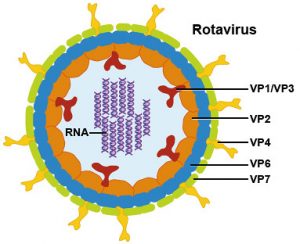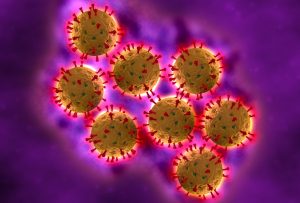What is rotavirus?
Rotavirus is a type of infection that is most common in children under 5 years of age. It is highly contagious and the virus that causes it is easily transmissible. Although the infection most often occurs in young children, adults can also develop it, although it is usually less severe.
The Centers for Disease Control and Prevention (CDC) Trusted Source reports that before the rotavirus vaccine was introduced in 2006, infection led to the following annual statistics in children 5 years of age and younger in the United States:
- 400,000 visits to the pediatrician
- between 55,000 and 70,000 hospital stays
- at least 200,000 emergency room visits
- between 20 and 60 deaths
- The vaccine is more than 90 per cent effective in preventing severe rotavirus disease.
Rotavirus A recombinant is not treated with medication. It usually resolves on its own over time. However, dehydration is a serious concern. Knowing when to seek medical intervention is essential to prevent life-threatening complications.
Rotavirus symptoms
Rotavirus symptoms tend to be more prominent in children. Symptoms can start within 2 days of exposure to rotavirus.
Rotavirus in children
The most common symptom of rotavirus is severe diarrhoea. Children may also experience:
- vomiting
- severe fatigue
- high fever
- irritability
- dehydration
- abdominal pain

Dehydration is the biggest concern in children. This age group is more vulnerable to fluid and electrolyte loss through vomiting and diarrhoea because they have smaller body weight. You will need to monitor your child carefully for signs of dehydration, such as:
- dry mouth
- fresh skin
- lack of tears when crying
- reduced urination frequency (or fewer wet diapers in babies)
- Hollow eyes
Rotavirus in adults
Adults can also experience some of the symptoms of rotavirus, such as:
- vomiting
- severe fatigue
- high fever
- irritability
- dehydration
- abdominal pain
However, many healthy adults experience them to a lesser degree. Some adults with rotavirus may not even experience any symptoms.
What causes rotavirus?
Rotavirus germs are found in a person’s stool (poop) and can be spread to other surfaces by unwashed hands after using the bathroom or changing diapers. If these germs come into contact with someone’s mouth, this is known as the faecal-oral spread.
People can spread rotavirus without ever having symptoms. Although faecal-oral spread is more common, it is also possible to get rotavirus by coming into any type of contact with the bodily fluids of someone who has it, such as sneezing or touching doorknobs or toys that have been touched by a child who has it.

Rotavirus treatment
There are no medications or treatments that will make rotavirus go away. This includes antiviral medications, over-the-counter antidiarrheal medications, and antibiotics. In terms of treatment, the goal is to stay hydrated and comfortable while the rotavirus works its way out of your system. Here are some tips on what to do in the meantime:
Home remedies
- Drink a lot of liquid.
- Eat broth-based soups.
- Take Pedialyte or other fluids with electrolytes (but homemade electrolyte solutions are NOT recommended because the combination of ingredients may not be right).
- Avoid sugary or fatty foods, or sugary juices, as they can make diarrhoea worse.
The BRAT diet (bananas, rice, applesauce, toast) is no longer recommended. Maintaining a balanced diet is recommended if possible to ensure adequate nutrition throughout the illness.
Rotavirus transmission
The virus that causes rotavirus is present in faeces and is spread primarily between the hands and the mouth. If you touch a person or object that has the virus on it and then touch your mouth, you could develop the infection. This is most common from not washing your hands after going to the bathroom or changing diapers.
Infants and children under 3 years of age are at the highest risk of developing a rotavirus infection. Being in daycare also increases your risk. You might consider taking extra precautions during the winter and spring months, as more infections occur this time of year.
The virus can also remain on surfaces for several days (and possibly weeks) after a person with the infection touches them. That’s why it’s crucial to disinfect all common surfaces in your home frequently, especially if a member of your household has rotavirus.
How long does rotavirus last?
During the course of the infection, your child may first have a fever and vomit. Watery diarrhoea can occur 3 to 8 days later. The infection itself can last 10 days in the stool after the symptoms are gone. You may need to call a doctor if symptoms do not improve within a few days or if they worsen. Rotavirus is diagnosed through a stool PCR test in a medical laboratory.